In the EWTN report, Immaculée says that Alphonsine was a “regular” girl, not known for her piety, so no one believed her.
“Unfortunately, their unbelief morphed into physical persecution. The young girl begged Our Lady to appear to another girl so she would be believed,” Ms. Johnson of EWTN writes.
On 12 January 1982, Our Lady answered Alphonsine’s prayer by appearing to Nathalie Mukamazimpaka, a fellow student with a sterling reputation who was known for her piety.
EWTN reports that things got somewhat better, but that there were still many who did not believe. Another girl named Marie Claire Mukangango was the third to receive an apparition on 2 March 1982.
During an apparition with Marie Claire, Our Lady is said to have spent much time weeping, the EWTN report indicates, and that Our Lady “said she was sad because so many did not believe her warnings.”
(Story continues below)
It was Marie Claire to whom Our Lady gave the visions of “destruction, torture, and savage human carnage.”
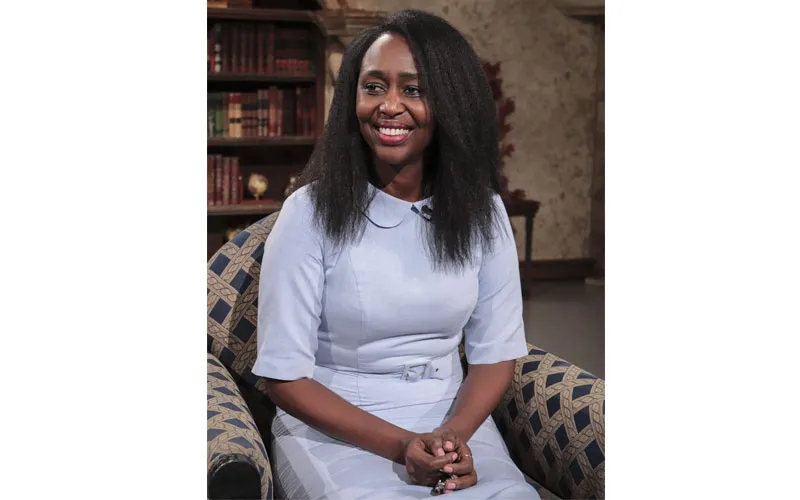 Immaculée Ilibagiza. Credit: EWTN Creative Services
Immaculée Ilibagiza. Credit: EWTN Creative Services
“Those visions were, of course, a preview of the genocide that would tear the country apart a dozen years later,” the EWTN official says of the apparitions, and adds, “In fact, online accounts of the history of this conflict are eerily prescient of problems that persist in the world today.”
The EWTN report further indicates that the vision by one of the visionaries was so terrifying that the young girl told Our Lady she was afraid she would never be able to sleep again.
Our Lady of Kibeho requested that the people of Rwanda pray the Seven Sorrow Rosary, a devotion given to St. Bridget centuries earlier, which had largely been forgotten, the report indicates.
“During the genocide, the sisters at the convent school the visionaries attended prayed this rosary from morning to evening. All survived the bloodbath,” the official of EWTN says in the report shared with ACI Africa.
“Each girl was given specific groups of people for whom to pray, but interestingly it was again Marie Claire who was taken on a trip to the three places about which Catholics so often hear,” Ms. John says in the report, adding that the first was a place where people were in terrible pain, fighting, and extremely angry.
Our Lady is said to have told Marie Claire that the place was “for those who will suffer eternally, who will never be forgiven.”
Marie Claire was then taken to a place where there was little light, and where there was suffering, but less than in the first place, and “where people seemed to be expecting somebody to come and help them.”
Finally, she was taken to a place with a beautiful light, brighter than the sun, where she could hear beautiful voices. She was told it was for “those who have light in their heart, the place of those who respect God.”
EWTN Director of Communications reports that when Marie Claire asked Our Lady why she had shown her these places, Our Lady said, “I showed you so you know the life that matters most is what is coming after this life on earth. Go and tell everyone. Encourage them to live the right way. Tell them to live without respecting God is the ultimate waste of time. They will regret it bitterly.”
Our Lady added, “You have to tell the people that these places actually exist. To refuse Jesus is to refuse paradise.”
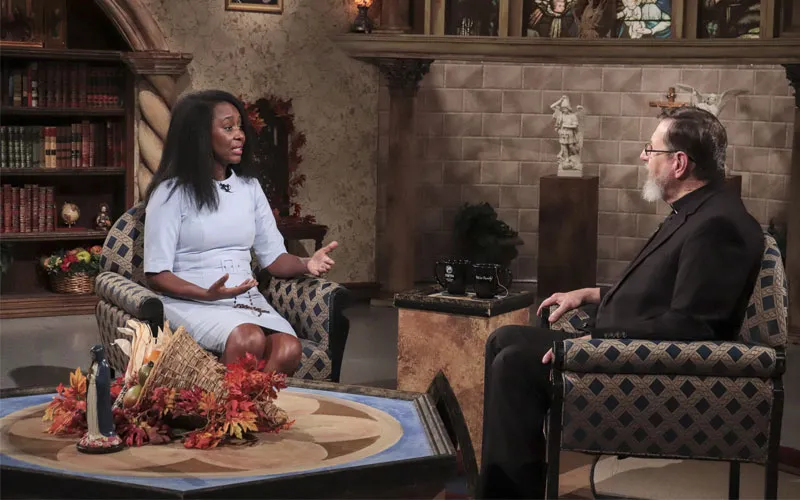 Immaculée Ilibagiza and Fr. Mitch Pacwa. Credit: EWTN Creative Services
Immaculée Ilibagiza and Fr. Mitch Pacwa. Credit: EWTN Creative Services
Marie Claire was also the visionary to whom Our Lady taught the Seven Sorrows Rosary, which the docudrama explains in detail. Our Lady said it is important we say this rosary “to help Jesus to save the world.”
Our Lady is said to have instructed Marie Claire to tell Sisters at the convent school the visionaries attended that they must love the rosary: the Seven Sorrows Rosary and the traditional rosary.
The particular message to the Sisters about the Holy Rosary was, “Tell them to say it with their hearts, being conscious of who they are talking to. Tell them to ask for strength to help them accomplish the promises they made to God. Remind them to always show love to each other so that others may take the example from my daughters. Tell them to be a true reflection of my love to everyone that they meet, everywhere they go, imitating my behavior and virtues.”
In the report, EWTN Director of Communications says that there is so much more to tell about the apparitions, which have been described as a message to the whole world to prepare for life after death.
Announcing the unveiling of the new docudrama on the visions in Kibeho, Ms. Johnson says, “This is a story no one who cares about eternal life should miss.”
We are told in the film that one of Our Lady’s biggest sorrows was that “few people truly listened to the advice and counsel she had given to her visionaries,” she says, and adds, “The question for us decades later is: Will we?”
The trailer of the docudrama can be viewed here ahead of the official release on November 24 at noon GMT.
Agnes Aineah is a Kenyan journalist with a background in digital and newspaper reporting. She holds a Master of Arts in Digital Journalism from the Aga Khan University, Graduate School of Media and Communications and a Bachelor's Degree in Linguistics, Media and Communications from Kenya's Moi University. Agnes currently serves as a journalist for ACI Africa.



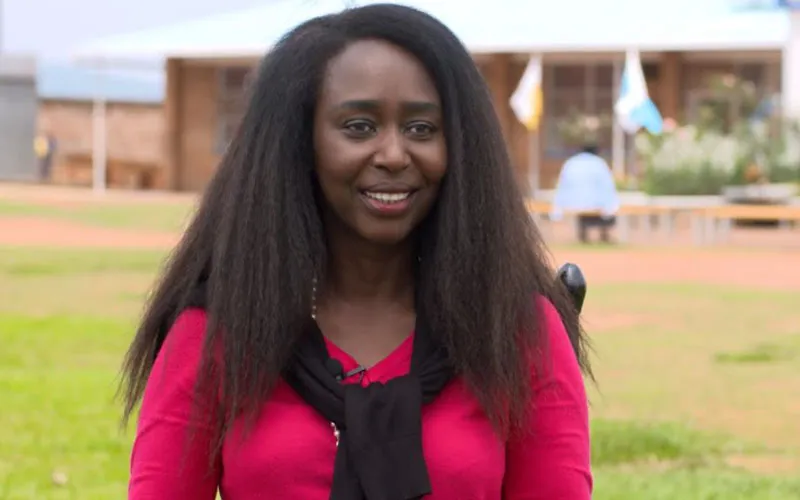
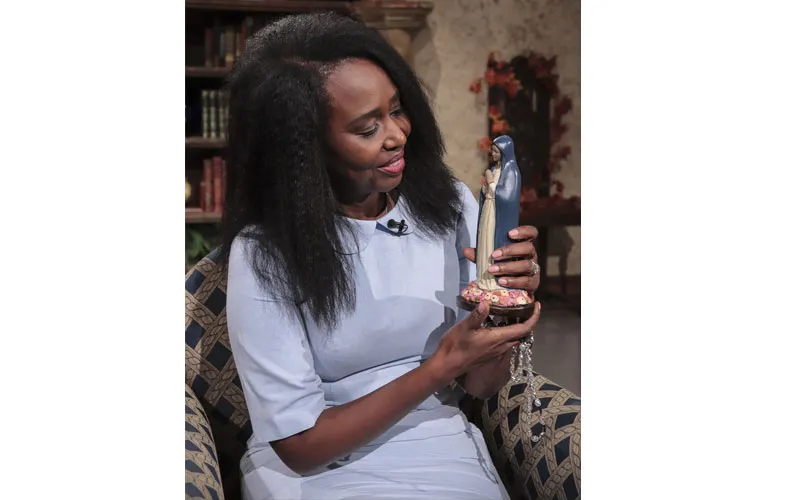 Immaculée Ilibagiza. Credit: EWTN Creative Services
Immaculée Ilibagiza. Credit: EWTN Creative Services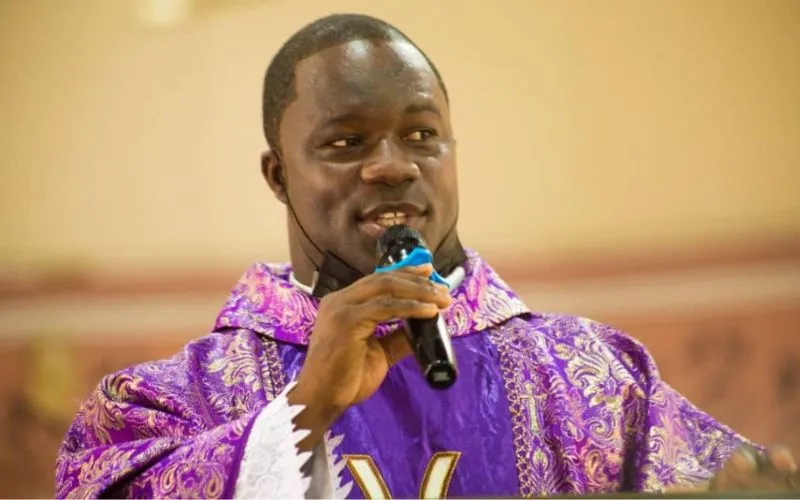
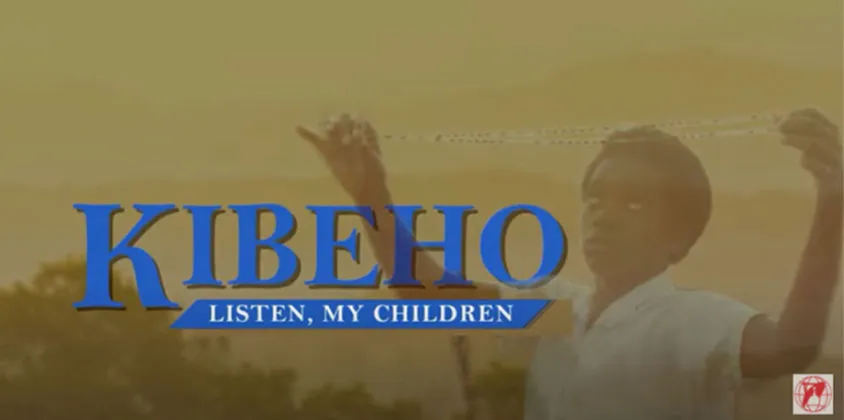 Screengrab from the EWTN docudrama "Kibeho: Listen, My Chirldren"/ Credit: EWTN Creative Services
Screengrab from the EWTN docudrama "Kibeho: Listen, My Chirldren"/ Credit: EWTN Creative Services Immaculée Ilibagiza. Credit: EWTN Creative Services
Immaculée Ilibagiza. Credit: EWTN Creative Services Immaculée Ilibagiza and Fr. Mitch Pacwa. Credit: EWTN Creative Services
Immaculée Ilibagiza and Fr. Mitch Pacwa. Credit: EWTN Creative Services


